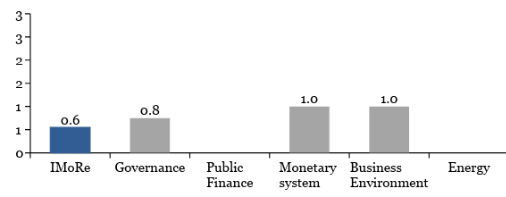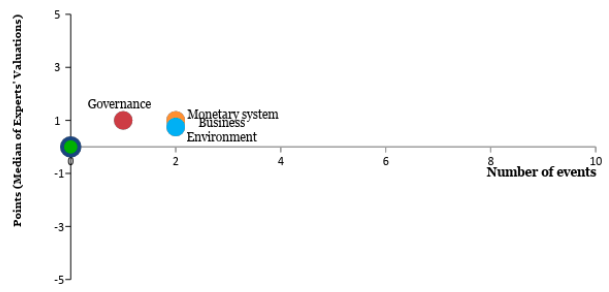Reform Index is +0.6 points for the period from September 17 – September 30, 2018 on a scale of -5.0 to +5.0.
The major event of the round is the deregulation in the sugar market.
Chart 1. Reform Index dynamics

Chart 2. Reform Index and its components in the current round

The major event of the round
The law on deregulation of the sugar market, +1.8 points
The regulation of the sugar market in Ukraine was carried out in accordance with the provisions of Law 758-XIV, which was adopted in 1999. Since then, it constantly changed, but ceased to meet the current conditions on the world and domestic markets long time ago.
According to the initial version of the law, the regulation of the sugar market was carried out through the annual quota for the production and sale of sugar produced in Ukraine. Along with this, quotas of three types were established: the quota “A” – the quota for sugar supply to the domestic market; quota “B” is the quota for supplying sugar beyond Ukraine under international agreements and replenish (if necessary) the quota “A”. The quota “C” – sugar produced in Ukraine above the quota “A” and “B” intended for sale by its owners exclusively outside Ukraine. Due to a significant reduction in sugar production and the fulfillment of Ukraine’s obligations to the WTO, the quotas “B” and “C” were abolished, but the volume of sugar produced and supplied to the domestic market of Ukraine was limited by the quota “A”.
According to the initial version of the law, the regulation of the sugar market was carried out through the annual quota for the production and sale of sugar produced in Ukraine. Along with this, quotas of three types were established: the quota “A” – the quota for sugar supply to the domestic market; quota “B” is the quota for supplying sugar beyond Ukraine under international agreements and replenish (if necessary) the quota “A”. The quota “C” – sugar produced in Ukraine above the quota “A” and “B” intended for sale by its owners exclusively outside Ukraine. Due to a significant reduction in sugar production and the fulfillment of Ukraine’s obligations to the WTO, the quotas “B” and “C” were abolished, but the volume of sugar produced and supplied to the domestic market of Ukraine was limited by the quota “A”.
At the same time, the law provided for the annual establishment by the Cabinet of Ministers of minimum prices for sugar beets, which are raw materials for sugar production of the quota “A”, as well as the minimum prices for sugar of quota “A”.
Such regulation not only created corruption risks, but also distorted market mechanisms in the industry. The enterprises tried to organize their work in such a way as to avoid regulation. In particular, during the procurement of sugar beet by sugar factories, a significant part of them (more than 40%) was received for processing under give-and-take conditions. Such raw material does not fall under price regulation, since its sale is not legal. Thus, the specified norm did not regulate a substantial part of the market.
Law 2518-VII of 09.04.2018 abolished the law 758-XIV, which regulated the sugar market.
Chart 3. Value of Reform Index components and number of events

(Please see other charts on the website)
Reform Index aims to provide a comprehensive assessment of reform efforts by Ukraine’s authorities. The Index is based on expert assessments of changes in the regulatory environment in five areas:
- Governance
- Public Finance
- Monetary system
- Business Environment
- Energy
For details please visit imorevox.org.
Attention
The author doesn`t work for, consult to, own shares in or receive funding from any company or organization that would benefit from this article, and have no relevant affiliations



